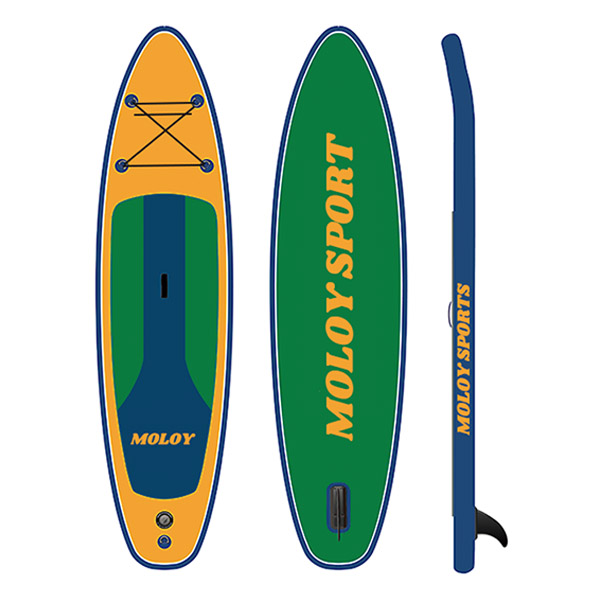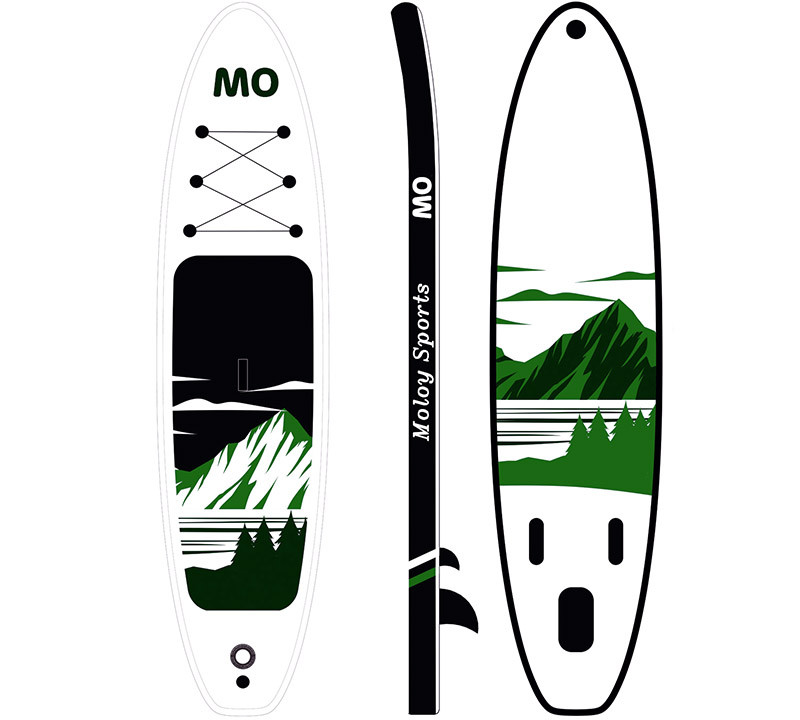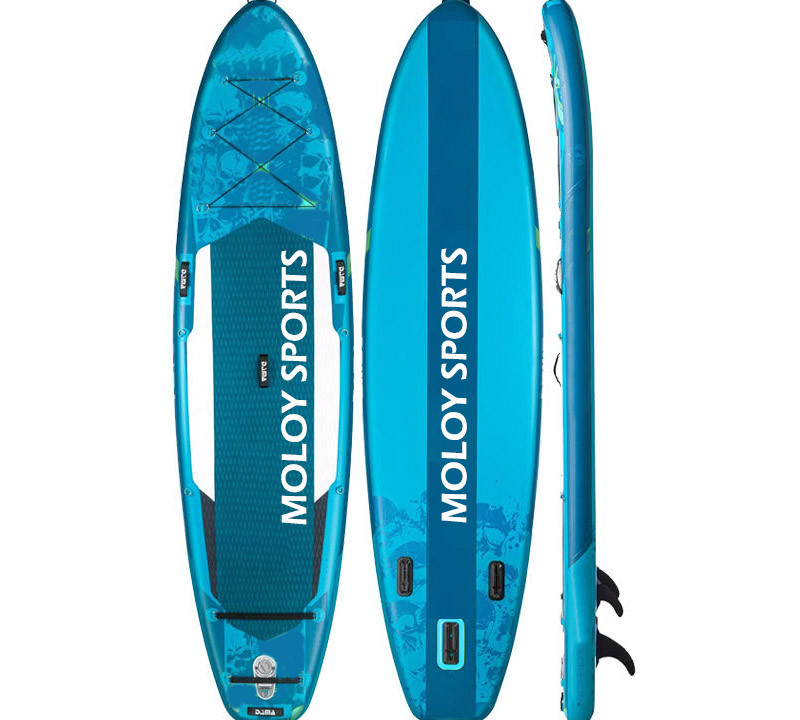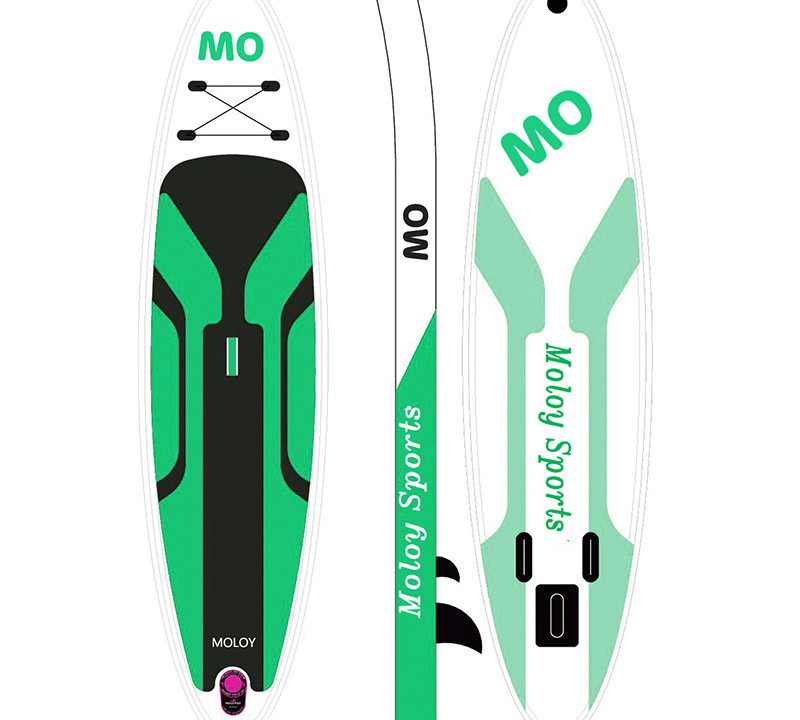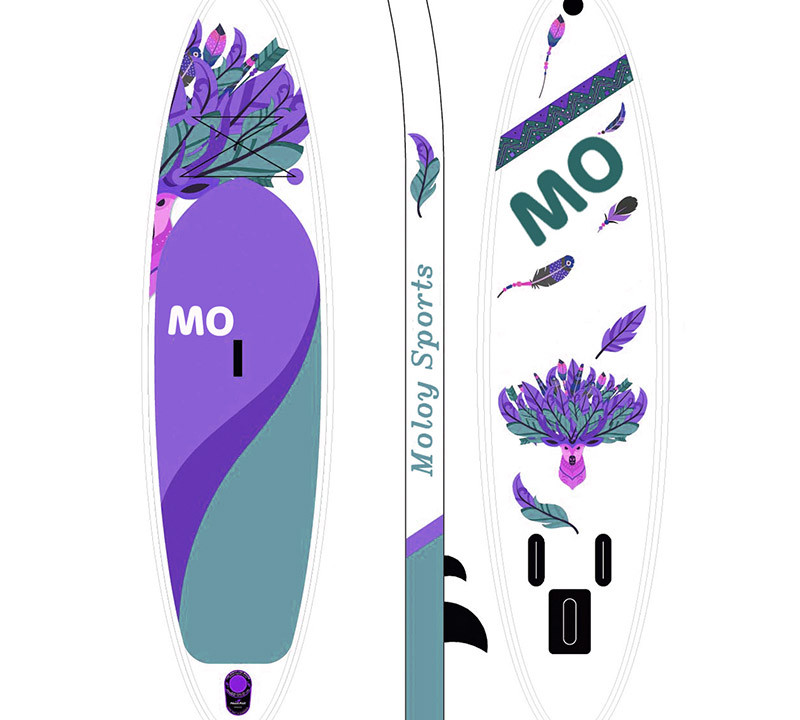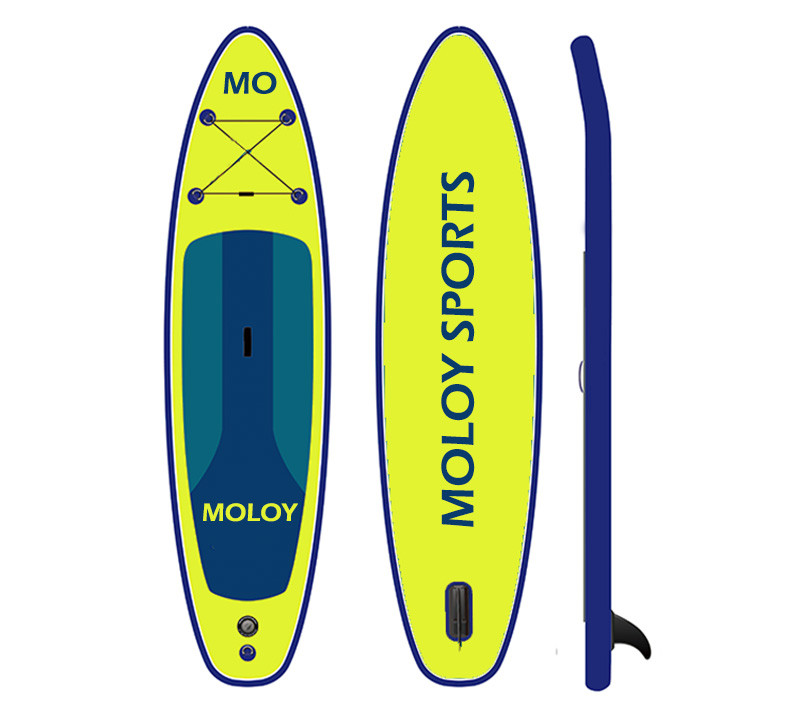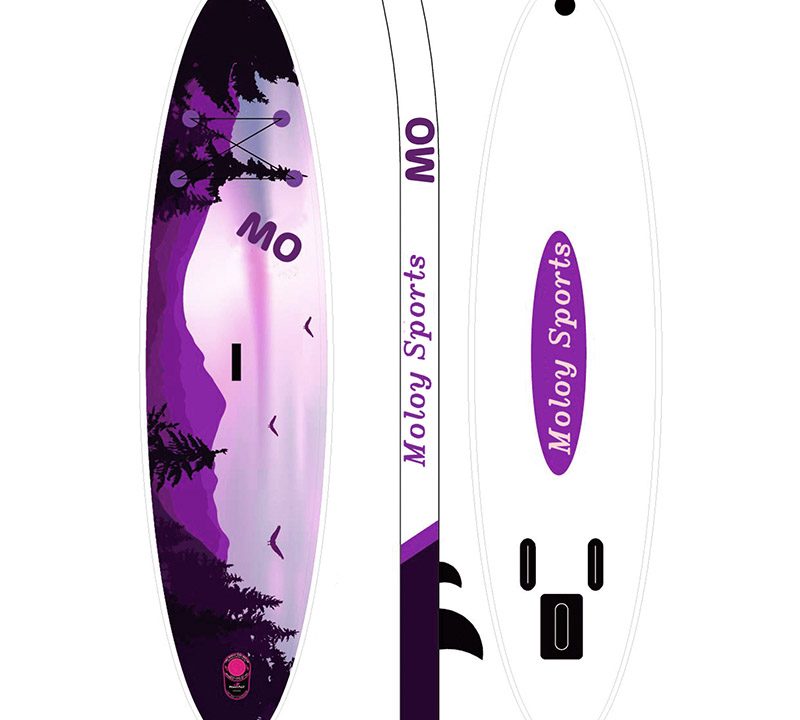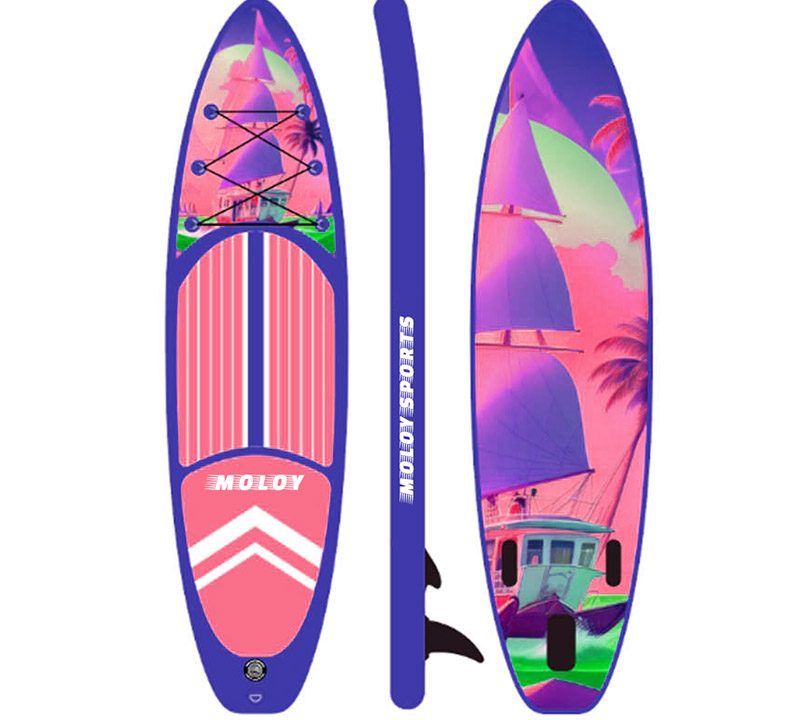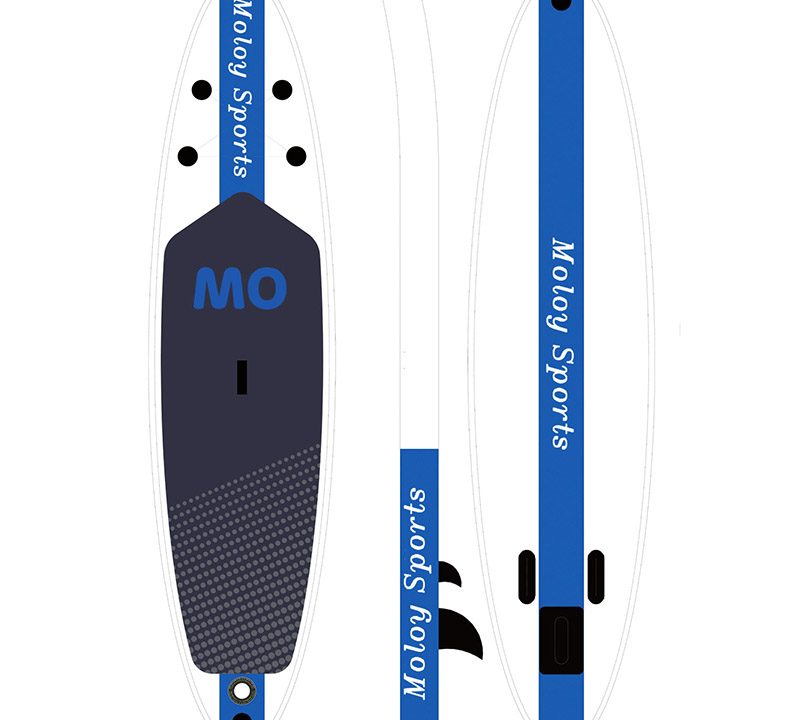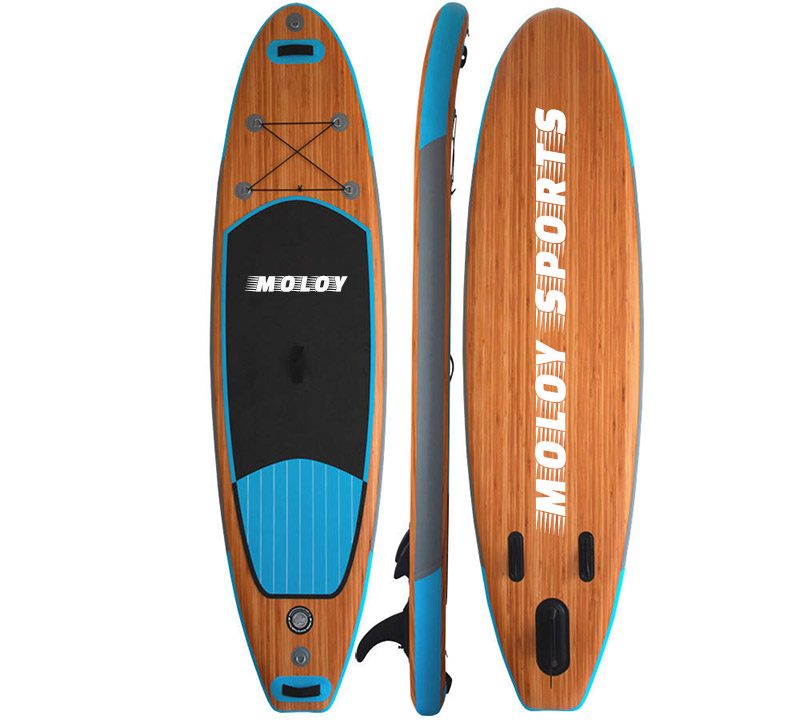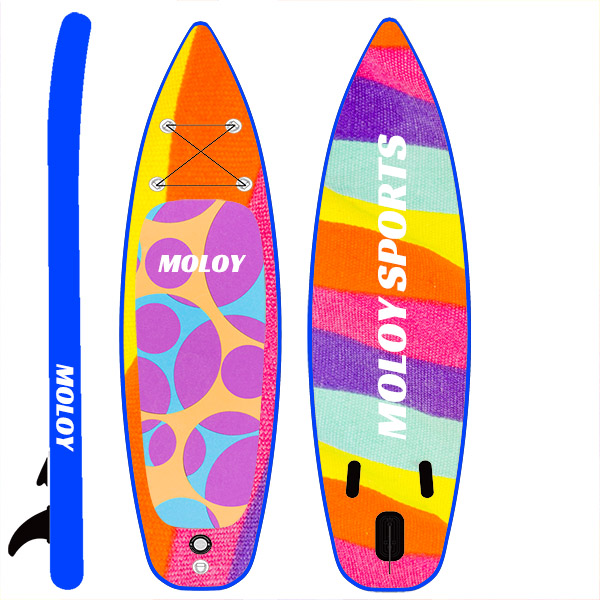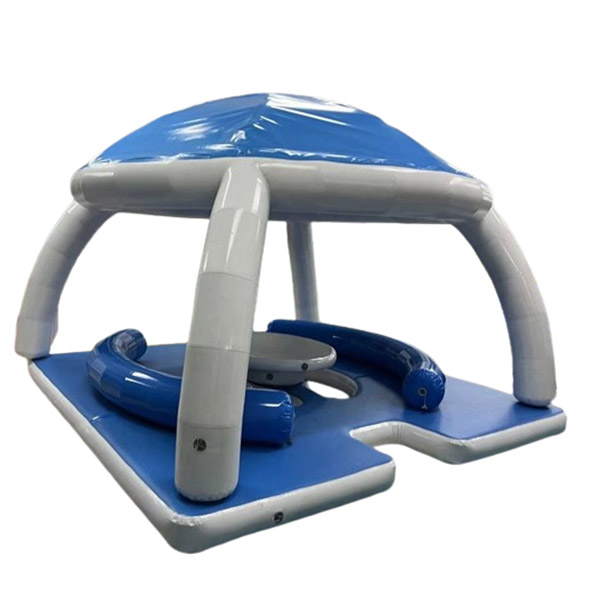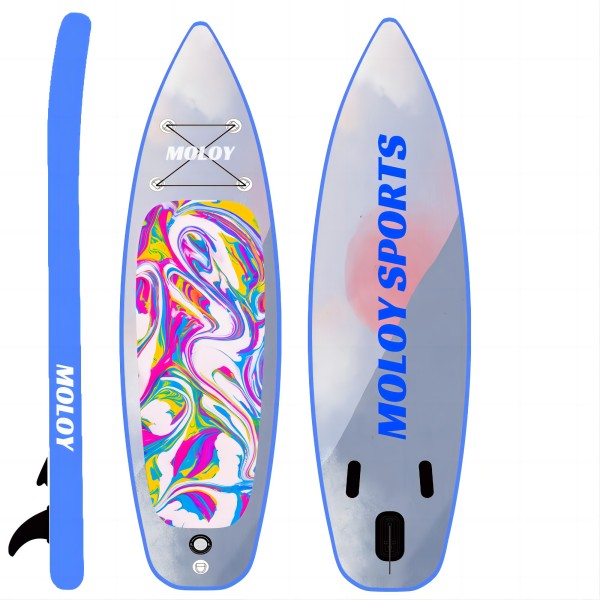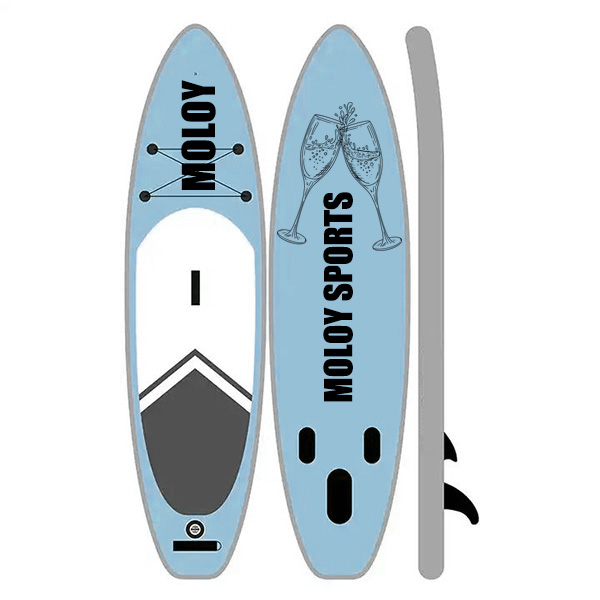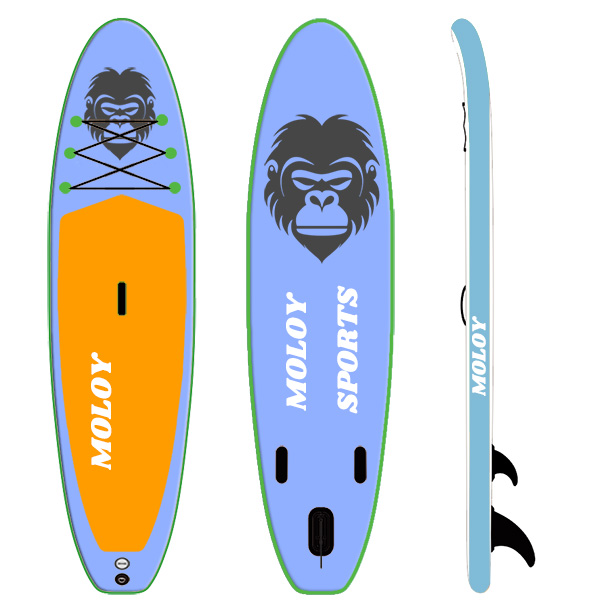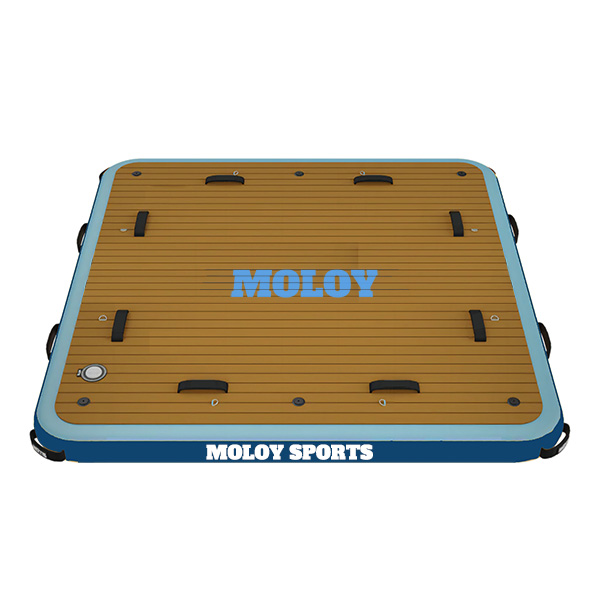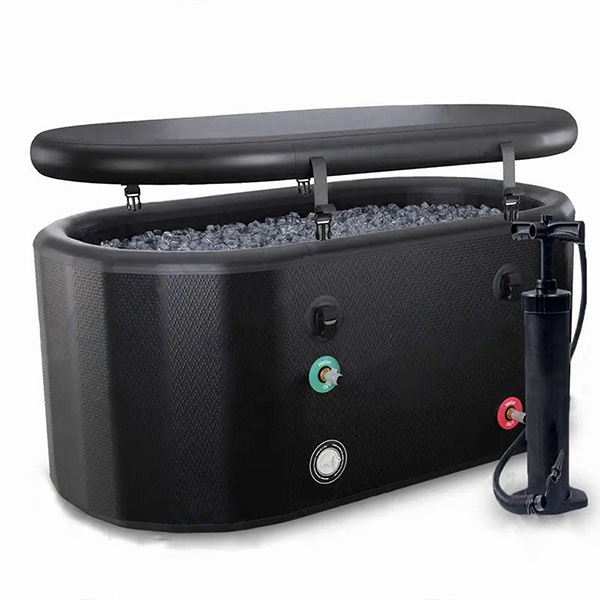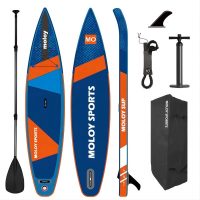
Como escolher a prancha inflável certa para sua atividade
Stand-up paddleboarding (SUP) is a popular water sport that offers a fun and low-impact way to explore the outdoors. You can play SUPs on a calm lake, catch some waves on the ocean, or challenge yourself with some whitewater rapids. It’s a good way to have fun with friends and family. But how do you choose the right one for your activity? Here are some tips to help you find the best board for your needs.
Firstly, you need to consider what kind of activity you want to do on your SUP. There are different types of boards designed for different purposes, such as recreational paddling, surfing, touring, racing, fishing, yoga, and more. Each type of board has its own features and advantages.
1. Recreational paddling board
2. Surfing paddle board:
3. Touring sup board:
4. Racing stand up paddle board:
5. Fishing SUP board:
6. Yoga sup board:
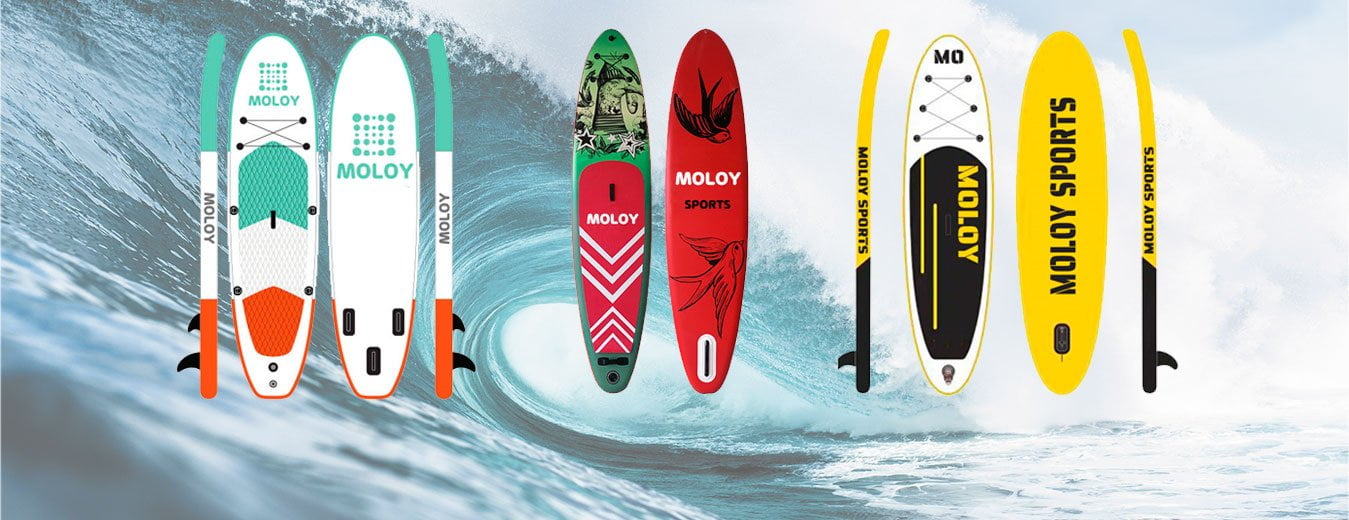
1. Recreational paddling board:
If you’re new to SUP or just want to paddle casually on calm waters, you’ll want a recreational board that is stable, easy to maneuver, and durable. Recreational sup boards are usually wide and long, with a round nose and tail. They can be made of drop stitch and PVC materials. Inflatable SUP boards are more convenient to transport and store.
2. Surfing paddle board:
If you want to catch some waves on your SUP, you’ll need a surfing board that is agile, responsive, and fast. Surfing boards are usually shorter and narrower than recreational boards, with a pointed nose and tail. They also have more rocker (curve) on the nose and tail to help them turn quickly on the waves.
3. Touring sup board:
If you want to go on longer trips or explore new waters on your SUP, you’ll need a touring board that is fast, stable, and efficient. Touring boards are usually longer and narrower than recreational boards, with a pointed nose and a flat bottom. They also have more volume (thickness) and displacement (hull shape) to help them glide smoothly and carry more gear. Inflatable paddle boards are lighter and easier to pack.
4. Racing stand-up paddle board:
If you want to compete or challenge yourself on your SUP, you’ll need a racing board that is very fast, sleek, and lightweight. Racing boards are usually the longest and narrowest of all boards, with a sharp nose and tail. They also have very little rocker and very high volume and displacement to help them cut through the water with minimal drag.
5. Fishing SUP board:
If you want to fish from your SUP, you’ll need a fishing board that is stable, spacious, and versatile. Fishing boards are usually wider and longer than recreational boards, with a round or square tail. They also have multiple attachment points for accessories like rod holders, coolers, anchors, etc. Inflatable fishing boards are more buoyant and comfortable to stand on for long periods of time.
6. Yoga sup board:
If you want to practice yoga on your SUP, you’ll need a yoga board that is stable, comfortable, and spacious. Yoga boards are usually wider and shorter than recreational boards, with a round nose and tail. They also have a soft deck pad that covers most of the board surface for cushioning and grip. Inflatable yoga boards are more flexible and easier to balance.
Secondly, you can also choose according to different shapes, sizes, weights, and construction of the board.
Shape and size of the board:
SUPs come in different lengths, widths, and thicknesses, which affect their stability, maneuverability, and speed. Generally speaking, longer boards are faster and more suitable for touring or racing, while shorter boards are more agile and easier to turn, making them ideal for surfing or river paddling. Wider boards are more stable and can carry more weight, but they are also slower and harder to paddle. Thicker boards have more volume and can float higher on the water, but they are also more affected by the wind and less responsive.
Hull type of board:
The hull is the shape of the front or nose of the board, and it determines how the board performs in different water conditions. There are two main types of hulls: planing and displacement. Planing hulls are flat and wide, and they are designed to ride on top of the water. They are versatile and can handle choppy water and waves well. They are also easier to balance and maneuver, making them suitable for beginners and recreational paddlers. Displacement hulls are pointed and narrow, and they are designed to slice through the water. They are faster and more efficient than planning hulls, but they also require more skill and effort to paddle. They are ideal for long-distance paddling or racing.
Personal preference and budget:
Ultimately, the best SUP for you is the one that fits your needs, goals, and style. You should also factor in the cost of accessories, such as paddles, leashes, fins, bags, pumps, etc. You can also rent or borrow a board before buying one to test it out and see if you like it.
Choosing the right SUP for your activity can make a big difference in your enjoyment and performance on the water. By considering these factors, you can narrow down your options and find the perfect board for you.
Moloy Sports is a professional manufacturer of inflatable SUP boards. We provide custom designs to meet customers’ needs. If you are looking for a bulk custom sup board manufacturer, Moloy is a reliable partner for you.

